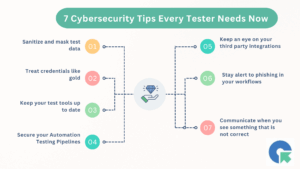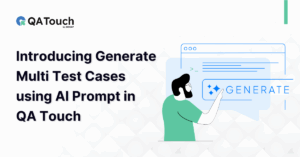For those who are new to the testing world and are super enthusiastic about learning all the different functional testing types, it’s a great place to be. Since functional testing is a very vast concept, just making sure that all of its types and elements are pretty crucial in software development. This blog will amply focus on all its aspects like functional testing types, examples, functional test cases, and how to write them. So, stay tuned to the blog and perhaps till the end to illuminate yourself with bountiful tech learnings. Let’s get started.
What is functional testing? And a quick show of some examples
Many interpret wrongly and assume that it is the testing of the complete software functionality at once; in fact, it is just a small chunk from an entire functionality hunk of software. For example, functional testing fundamentally sets out what exactly the software does. And again, that’s only a tiny part of the full software functionality.
Let’s look into some basic examples of functional testing.
- Did you ever face a problem logging into a page even with the correct credentials?
- Do websites prompt a message if your card details are wrong while making an online payment?
Well, all of these fundamental functionalities, their regular monitoring, and the right performance is the job of functional testing. It also inspects if the software is functioning according to the preplanned requirements or not.
Functional testing is also primarily a Quality Assurance process, and it is one type of black-box testing. Unlike the white-box testing, functional testing runs by feeding the input, then checks the output, and it has very little to do with the internal program structure. The one performing the test need not necessarily know the programming language.

But, whosoever is into the testing sphere should know when to perform what test. For instance, run a smoke test on every build before you deliver it to the QA. And run a regression test only after fixing the bugs in the successive release.
Well, in the real-time scenario it’s hard to replace the traditional manual testing with automated technology. Many testers heavily rely on manual testing even today for better results. Let’s learn more about how testers do functional testing in both automation and manually in the following paragraphs.
A list full of functional testing types
Now let’s learn what the different functional testing types are. The illustration of its various models is as follows.
1. Unit testing
This test ensures that the developed code in each component is efficiently running as expected. In unit testing, the developers strictly and only care about the interface and specifications of the particular component.
You can test each unit of code individually and then proceed to the next unit of the component. Besides, the process also helps in the documentation of each unit code development. A unit test is so essential that without it, functional testing will face a lot of issues.
2. Component testing
In this test, the developer can test the individual components separately. The test will ensure the functionality, usability, and more of each component and checks if it matches the expected output. Typically a component is something that takes in the input and gives some specific results. A web page or screen is a component of the software. Now, let’s take a look at the below examples and learn more about when to conduct component testing.
- A tester can test the user interface of the software to check the proper performance of accessibility and usability.
- Page loading is another component that is eligible to get its performance tested under component testing.
- With the use of SQL, the user interface component is also thoroughly assessed for security purposes.
- The tester can examine the functionality of the page by giving both right and wrong credentials.
3. Smoke testing
One such indispensable type of functional testing ought to be done first on every build. A new build should undergo the smoke testing early, and only then the QA further tests its functionality. To avoid such exhausting testing, the developer must choose only vital features to test. The objective of doing so is to examine the high priority functions of the software and simultaneously doing it quickly.
If any build fails in the smoke test will be immediately sent to the developer for fixing it. All the passed builds are known as stable builds and are eligible to go for regression tests depending on the situation. Let’s understand it in a better way. Look at the below example. It’s very simple.
If, for example, we made a student management portal for our clients, then this is how our smoke testing outline looks.
The client made some features mandatory for development like attendance, leave application, notes library, etc. The developer built a new app for leave application purposes, which requires around 100 test cases to test all the scenarios. Rember, we discussed that testers are supposed to cut down the testing process. So, let’s consider only the 20 obligatory test cases.
- The login page.
- Calendar testing while applying for leave for a particular date.
- The tester assesses if the student can write his/her reasons for taking the leave.
Apply button. - Is notification working, and are the respective people notified timely.
Logout.
This way, the developers can fix the bugs in the meantime, saving time.
4. Integration testing
The integration test is to check if all the components are individually fine and also effectively working together. Two or more integrated components sometimes possess bugs, so, to correct them it’s essential to conduct this testing. It is a common functional type that is mostly automated. The integration test ensures the smooth flow of data and operational commands between different components. Because in the end, the modules developed should coherently work together as a whole software. This unearths and digs issues in UI operations, database access, API calls, operation timing, and more.
Let’s understand the integration testing by a very familiar example, a search engine. It certainly is no less than magic. Now, we’ll try to understand the different modules and know how the search results take only a few seconds to show up.
- Search function module: It’s where you type the search keyword. A general example is the google search engine.
- A converter module: This module converts your keyword into XML.
- Engine module: Consider it as the gateway to the giant database where the big queries get solved.
- Database module: The hub of answers. Finally, the viewer gets the appropriate search results for their query.
Now, what is the role of the integration testing here?
Well, the test verifies a few aspects very promptly on the given example. Like, are the XML files appropriately generated? Is the keyword correctly converted? How right is the data that is flowing between the modules? Are the results correct and consistent?
You might have already heard about the interface testing. It also comes under the umbrella of integration testing. It’s typically the testing of the data flow and operational sync between different components of the software.
5. Regression testing
The developers make a lot of changes in the software functionality and features as the testing progresses. In the meantime, these changes cause unanticipated behavior in the software. The regression testing ensures that these changes won’t disturb the existing functionality of the software. Side by side the test also makes sure that the previous bugs remain inactive and ineffective after making the changes.
Coming to the worrying side of this testing type several challenges come in the way of testers. Like:
- There is always an increase in the test cases every time a new change occurs.
- Sometimes the budget becomes a big hurdle for the testers.
- The frequency of testing is a bit uncertain because the new changes happen all the time.
6. Sanity testing
Wherever there is a new build with negligible modifications testers won’t usually go for burdensome regression testing. They prefer this small yet prevalent functional testing type called sanity testing. This examines that the new changes are properly functioning and further not causing additional issues in the software. It resembles the smoke testing type but it’s very different. The smoke testing verifies the end-to-end functionalities whereas sanity testing takes care of only new functions with very few modifications.
7. System testing
Now, this type of testing is solely monitored by some individual testers who have no role in the development process whatsoever. This test takes place right after the regression testing. All the components are compiled and integrated for complete software functionality testing. It’s vital to perform a thorough system testing to find out if the software developed is accurately functioning and meeting the standard requirements set by the stakeholders.
8. User acceptance testing
It is the last phase of software testing and perhaps a perfect time for the testers to breathe in a little. The main objective of any software testing is to produce exceptional software/products. The relentlessly developed product should give an amazing experience to the end-users. Probably every developer extensively works to give their client experience beyond their expectations. This test usually takes place at the time of product delivery to the concerned stakeholders.
How to write functional test cases with examples?
Functional testing is so noteworthy for its objective of addressing the core purposes of the software. And such complex testing prodigiously depends on the set requirements. For testers conducting functional testing, the process is a big challenge. Right from understanding specifications of functional testing to designing test cases and till test sign off, every process demands the same attention. Now, let’s focus on types of functional test cases and how to write them with examples.
Here the test scenarios play a major role in deciding what goes in the test case. It’s because the test scenario is an overview of the product’s functionality. And these derived test scenarios will pretty much determine what will go for testing. Let’s take a familiar example, online payment, and look into the possible test scenarios and test cases.
- While providing the user details in the payment gateway choose a secure path like HTTPS.
- Apps usually ask their clients for storing their card info, so the storage should be a well-encrypted one.
- Check the field validation, it is a must. The details cant go blank. Payment proceedings get difficult or unsuccessful without the right data.
- Check all the payment possibilities like the right card number, correct CVV but a wrong expiry date so on and so forth.
- There are many payment options and a quick test of all those options is mandatory.
- Test different currencies if it’s a globally operating business.
- Use blocked cards and invalid cards.
- Try to do the payment after the session timeout.
- Check for timely OTP from the receiver end.
- Check if the user is receiving the email and messages after the payment.
- And lastly, check the proper payment receipt from the vendor.
Also, people get confused about what comes under functional and non-functional testing. And confusions aren’t certainly good if you are a tester. Hurry up and click here to learn the difference between functional and non-functional testing.
And these are a few insightful learnings about functional testing and functional test cases. In case you have any doubts about software testing and Quality Assurance do look into other blogs. We post a lot of useful content for the testers watching us from the other side.










